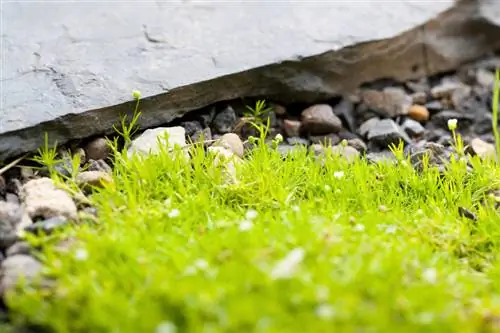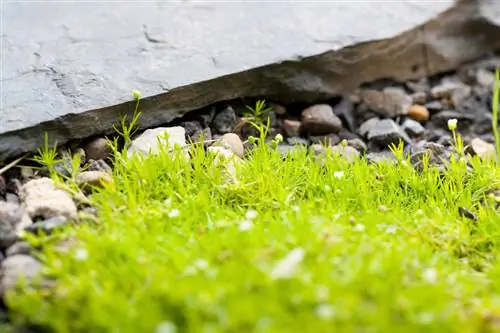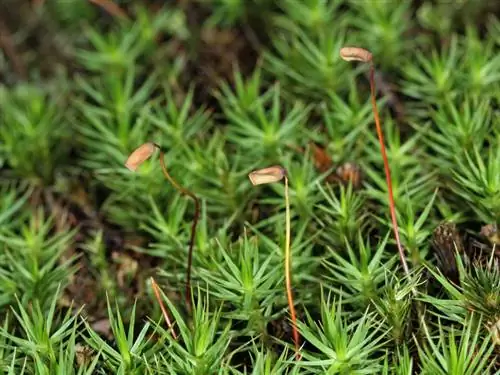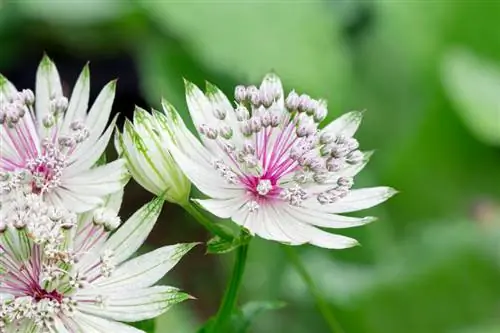- Author admin [email protected].
- Public 2023-12-16 16:46.
- Last modified 2025-01-23 11:20.
The star moss is a perennial plant that is hardy in most locations (down to around minus 15 degrees Celsius). Outside of rock gardens, it is also often used to plant paving joints, graves or as a lawn replacement. Under the right location conditions, caring for this plant requires relatively little effort.

How do you properly care for star moss?
Star moss requires shady to semi-shady locations, well-drained soil and occasional fertilization. Pruning is rarely necessary. In dry conditions, the plants need to be watered regularly. Diseases or pests are unusual, deficiency symptoms can occur.
How often does the star moss have to be watered?
As the name star moss suggests, this low-growing plant usually tolerates shady and semi-shady locations very well. If you want to plant the star moss in a location with full sun, you must ensure that it is watered almost daily in the morning or evening (especially in midsummer). This is all the more so because the plants should be cultivated on a permeable soil that is ideally enriched with sand in order to prevent winter signs of rot caused by waterlogging.
When can the star moss be transplanted?
Since transplanting in midsummer can lead to the plants drying out and growing more poorly, spring and autumn should be preferred for this. However, don't wait too long before planting out in autumn, otherwise you may lose your ability to survive the winter.
When and how is the star moss cut back?
Due to its stocky growth, pruning is rarely necessary for star moss. If the star moss planted as a lawn replacement becomes too tall, it can be shortened with planting scissors in spring or autumn. Lawn edging stones have proven effective in automatically slowing down the plant's tendency to spread sideways.
Are there diseases or pests that can be dangerous to star moss?
Diseases generally do not occur with star moss, although deficiency symptoms due to wetness, dryness or winter rot are possible. Hungry snails can be repelled with slug pellets (€9.00 on Amazon) or a snail fence.
Should star moss be fertilized?
The star moss only needs additional nutrients on very poor soils; these can be administered every four weeks with a liquid fertilizer. At the end of July, all fertilization of star moss must be stopped so that the fresh shoots and offshoots of the plants can “mature” sufficiently before winter.
What should you consider when wintering?
Star moss is hardy down to around minus 15 degrees Celsius without special winter protection. To prevent mold from forming under the snow cover, any leaves that accumulate should be removed from the star moss cushions before the first snowfall.
Tip
If the star moss grows too much in one location, parts of the cushions can easily be cut out with a sharp spade in spring and autumn and replanted directly elsewhere.






